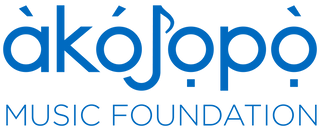Author: Ngozi Emeagwai
Series: (1) What is African Art Music?
Theme: (8) Creative Musings
Issue: 2
A beat that unifies rhythm is the pulse of existence, and the people’s rhythm is a beat that strikes a chord deep within our collective spirit. The symphony of laughter, tears, challenges, and successes unites us. The people’s rhythm is more than a musical notion; it is a cultural phenomenon that reflects a community’s heartbeat. It’s the cadence of everyday conversations, the melody of classic music, and the harmony of common experiences. People’s rhythms vary over the world, but they are universally relatable.
Africans over the centuries have danced to different rhythms, from the distant Bata dance in busy farmlands throughout West Africa to the ever calisthenic Atilogwu dance in southeastern Nigeria. We shared these beautiful artistries long before the arrival of Europeans, so it baffles me when I hear Eurocentric stories about the continent being dark and void until the arrival of the Europeans.
These artistries are not well known today due to a lack of cultural exposure. Most Africans can’t even describe what the Bata dance or the Atilogwu dance encompasses because of it. These expressions of art during pre-colonial times in West Africa were not just ordinary activities, they signified important aspects of the people and what they believed. For example, Bata dance relates to Yoruba Sango ancestry and Ifa, Yoruba traditional religion. Bata dance was used to pay homage to the Sango god. Centuries passed and African culture has gone through different phases of change and development.
The way that African people currently live their lives has been influenced by the colonial encounter and we are gradually mixing traditional and globalized musics to create what we hear now. The people’s rhythm cannot and will not simply be forgotten but I see it represented less. Most times, I only experience African sounds and rhythms are at local and traditional events. Western sounds are very well represented and appreciated by most people over our own music traditions. Sometimes I fear that in few years from now, African traditional musics could be threatened. An average African might lose touch of the originality of what it feels to dance and sing in the African rhythm and meter. We as Africans and enthusiasts of our heritage are responsible for shaping and improving the future of what our music represents. It is important that while we sometimes compromise, we stand out by embracing and advancing upon our African traditions. These thoughts are mostly focused on improving and enhancing the future of the continent’s traditional music which is facing new adversities.
Based on my daily experiences in the community where I live, I don’t see much representation of what the people’s rhythm stands for and that concerns me. I believe that the future of our identity and culture depends on the responsibility we take as individuals to promote and sustain what truly is ours. Thankfully, the African art music community plays a crucial role in promoting culturally rooted creativity in what truly is the people’s rhythm. We are Africans and as global citizens, our history, culture, and traditions are as valuable as those from elsewhere in the world, so we must champion them.
About the Author
Emeagwai Ngozi is an undergraduate student of History and Strategic Studies at the University of Lagos, complementing her academic pursuits with a diverse creative portfolio. As a talented vocalist, she is an active member of the Mountain Top Chorale.

